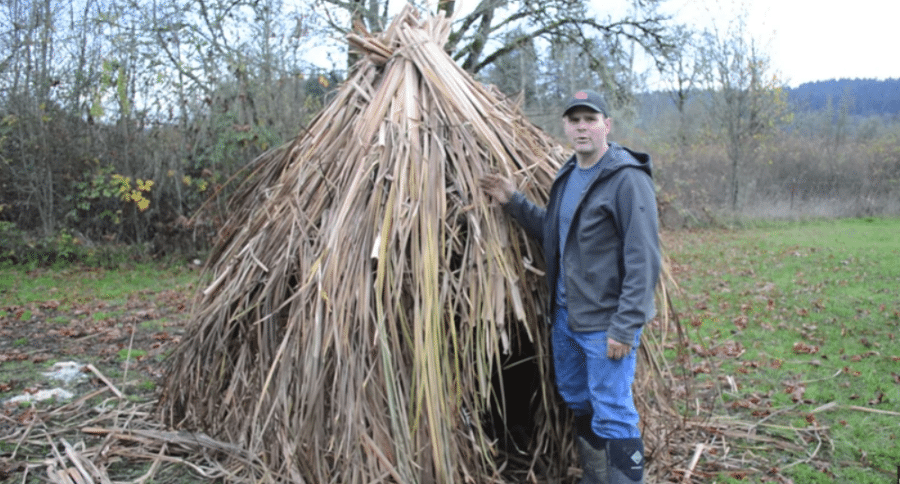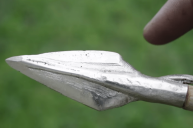Shawn Woods teaches you how to make a primitive cattail shelter as well as how to heat it using hot stones in this two-part video tutorial.
Survival and primitive skills expert Shawn Woods shows how he created a completely weatherproof willow and cattail shelter, secure and stable enough to protect you should you find yourself in a survival situation.
Most everyone knows that cattails are considered to be the grocery store of wild foods (thanks Euell Gibbons!). They provide food with their several edible parts, leaves for basket and textile weaving, fire making components, and more. Here they also provide the materials to make an emergency shelter.
First, Woods collects cattails in the spring and hauls them off to dry in his garage. You, of course, may not have the option of allowing your cattails to dry thoroughly if you're in a survival situation. Just collect them and amass enough - approximately 10 large bundles - to fabricate the shelter.
He then collects long willow poles about an inch to an inch-and-a half in diameter and at least 10 to 12 feet in length for the vertical skeleton of the structure. He also collects shorter and smaller diameter willow shoots to weave horizontally into the vertical poles.
Once he's amassed the materials needed, he begins constructing the structure.
Bending the willow poles and tying them to one another in an upside down cup formation, Woods then weaves the shorter willow shoots in and out of the poles, doing two at a time in the same location and alternating the in-and-out weave.
It doesn't take very long to create this basic upside down basket skeleton.
Once he gets the skeleton finished he begins layering bunches of cattails over it, securing them with additional willow shoots woven into the vertical frame. He starts at the bottom and then adds a second layer at the upper half of the shelter, tying them together at the top with cattail leaves.
The entire process took only a few hours and created a dry, weatherproof and secure shelter. It is very similar in method to this grass thatch shelter, but even more simple. Woods also layered cattail leaves on the floor of the structure for additional insulation.
It began raining and then snowing after he finished the shelter, but the interior was dry and cozy. You should definitely practice building this shelter - as you should practice all survival skills - so that you're familiar with it should you ever find yourself in a tough spot. Don't wait until things go south to try these skills out.
In the following video Woods heats the cattail shelter with hot rocks. He builds his fire with a hand-drill and all natural materials. This is an interesting technique well worth learning, but if you're in a survival situation make your fire with whatever method you can (matches, lighter, whatever).
Place large rocks in the fire once coals develop to heat them up. Be careful though, especially if using river rocks, as they can explode from the heat. Place the stones in the fire and move away.
Once the stones are hot make a simple sling or basket of sorts out of twigs and move the hot stones into the shelter. Woods does this and the heat is significant. He says that it has raised the interior temperature at least 20 degrees or more.
Yet another use for the amazing cattail. Is there anything that this plant cannot provide the knowledgeable survivalist?
Like what you see here? You can read more great articles by David Smith at his Facebook page, Stumpjack Outdoors.
NEXT: Man Builds Tile-Roofed Hut Entirely by Hand Deep in the Forest




